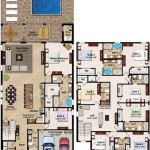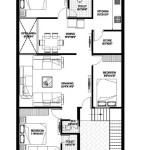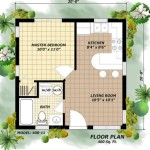House Plans and Floor Plans
A house plan is a set of detailed drawings that provide instructions for constructing a house. These plans typically include floor plans, elevations, sections, and details. Floor plans are two-dimensional drawings that show the layout of a house, including the placement of rooms, windows, doors, and stairs. Elevations are drawings that show the exterior of a house from different sides. Sections are drawings that show the interior of a house, including the framing, insulation, and finishes. Details are drawings that provide specific information about how to build a particular part of a house, such as a window or door.
House plans are essential for obtaining building permits and ensuring that a house is built safely and according to code. They can also be used to estimate the cost of construction and to visualize the finished product before it is built. Floor plans are particularly important for planning the layout of a house and ensuring that it meets the needs of the occupants.
Types of House Plans
There are many different types of house plans available, each with its own advantages and disadvantages. Some of the most common types of house plans include:
- Traditional plans: Traditional house plans are based on historical architectural styles, such as Victorian, Colonial, and Craftsman. These plans typically feature symmetrical facades, pitched roofs, and formal interiors.
- Contemporary plans: Contemporary house plans are characterized by their modern and minimalist design. These plans often feature open floor plans, large windows, and flat roofs.
- Ranch plans: Ranch house plans are single-story houses with a long, low profile. These plans are popular for their simplicity and affordability.
- Cape Cod plans: Cape Cod house plans are based on the traditional homes of New England. These plans typically feature a symmetrical facade, a central chimney, and a steep roof.
- Cottage plans: Cottage house plans are small, cozy houses with a charming and rustic appeal. These plans are often used for vacation homes or guest houses.
Choosing the Right House Plan
When choosing a house plan, it is important to consider the following factors:
- Your needs: What are your needs and wants for a house? How many bedrooms and bathrooms do you need? What kind of layout do you prefer? What style of architecture do you like?
- Your budget: How much can you afford to spend on a house? Keep in mind that the cost of construction will vary depending on the size, complexity, and location of the house.
- Your lot: What are the dimensions and topography of your lot? Some house plans may not be suitable for certain types of lots.
- Your climate: The climate in your area will affect the design of your house. For example, a house in a cold climate will need to be well-insulated and have a heating system that can withstand the cold.
Conclusion
House plans are an essential part of the home building process. They provide instructions for constructing a house and ensure that it is built safely and according to code. When choosing a house plan, it is important to consider your needs, budget, lot, and climate. With careful planning, you can find a house plan that meets your needs and creates the home of your dreams.

House Plans How To Design Your Home Plan

House Plans How To Design Your Home Plan

Top Tips For Choosing A Floor Plan Your New Home

Peach Tree House Plan Ranch Floor Designs

Small House Plan Ideas For Diffe Area To See More Read It Floor Plans

House Plans Ly 200 To Choose From Generation Homes

How To Read A Floor Plan With Dimensions Houseplans Blog Com

House Plans Floor Blueprints

House Plans How To Design Your Home Plan

House Plans The Best Floor Home Designs Abhp








